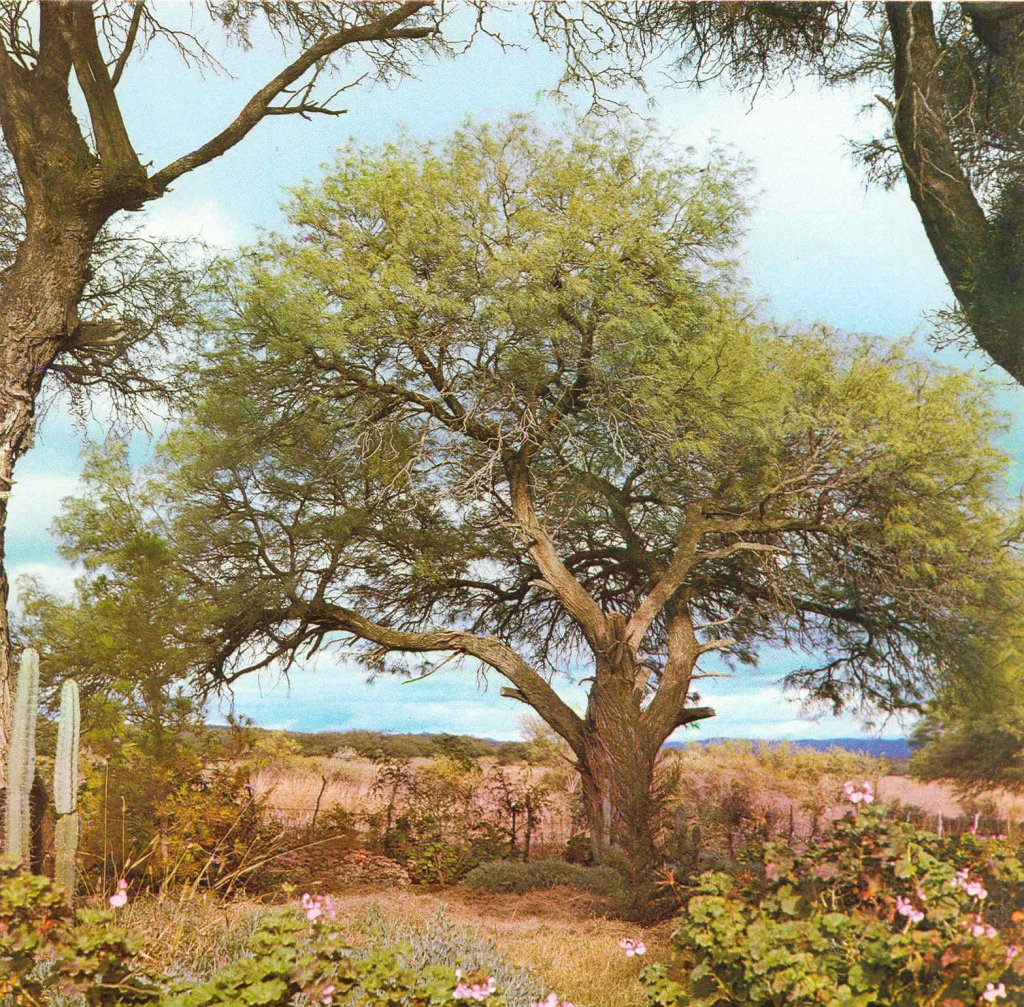- Prosopis alba
Taxobox
name = Algarrobo blanco
status = LR/nt | status_system = IUCN2.3

image_width = 240px
regnum =Plant ae
divisio = Magnoliophyta
classis = Magnoliopsida
ordo =Fabales
familia =Fabaceae
subfamilia =Mimosoideae
genus = "Prosopis "
species = "P. alba"
binomial = "Prosopis alba"
binomial_authority = Griseb.:"For other tree species with similar names, see "
Algarrobo ".""Prosopis alba" is a
South America n tree species that inhabits the center part ofArgentina , theGran Chaco ecoregion and part of the Argentine Mesopotamia. It is known as "algarrobo blanco" in Spanish, which means "white carob tree" (the Spanish settlers gave it that name because of its similarity to the Europeancarob tree ). Other common names come fromGuaraní : "ibopé" or "igopé"."Prosopis alba" is a medium-sized tree, measuring between 5 and 15 m in height and 1 m in diameter, though such tall specimens occur very rarely at present. The trunk is short and the treetop is globulous, sometimes reaching 10 m in diameter. The bark is thin, brown-grayish in colour, with streaks, and it has
tanning properties.The tree is employed for ornamental and utilitary roadside planting and
windbreak s. Itstimber , which is rather dense (relative density = 0.76) and difficult to work, is used for doors and floors, for paving blocks, shoe lasts and wine casks (where it replaces the Europeanoak ). The wood responds well to drying and is therefore valuable for work that requires stable dimensions regardless of humidity. It is also durable for outdoor use.The flowers are small, greenish-white or yellowish, and hermaphroditic.
Pollination , mediated by wind and insects, is alogamous (crossed), since the female reproductive organs are turned active before the male ones.The fruits are modified pods, 20 cm long, with brown seeds about 7 mm long, and they contain a sweet floury paste ("patay"), very high in calories, that can be used for
fodder or turned intoflour for human consumption. In the1940 s a mildly intoxicating beverage called "aloja" was made from it through fermentation; in turn it was sometimes distilled to produceethanol . Between half and three quarters of the fruit's weight issugar .The tree can reportedly tolerate drought, salt and sand; in fact, it is extremely efficient with regards to water consumption, it produces the most fruits in years of drought and has been successfully introduced in arid terrains. However, it cannot stand even mild frost.
"P. alba" and other species of "algarrobo" of genus "
Prosopis ", such as "P. nigra" ("algarrobo negro") are often confused or not correctly distinguished in botanical literature; in part this is due to the ease of hybridization of the genus.References
*cite encyclopedia| last=Duke | first=James A. | title="Prosopis alba" | encyclopedia=Handbook of Energy Crops | year=1983 | url=http://www.hort.purdue.edu/newcrop/duke_energy/Prosopis_alba.html
*"Libro del Árbol: Especies Forestales Indígenes de la Argentina de Aplicación Industrial" (edited by Celulosa Argentina S. A., Buenos Aires, October 1975)
*
Wikimedia Foundation. 2010.
